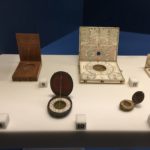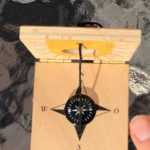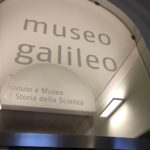Science assembly show for schools
Magic Circus presents Bay Area Science assembly programs, which is a STEAM assembly for elementary and middle schools.
To keep our science assembly show for schools up to date, we research science museums around the world. This summer we visited the Galileo museum in Florence and the Leonardo da Vinci museum in Milan, Italy.
To our surprise did we find various models of sundials (see photos) and we purchased a new version with a compass. In our science assembly show for schools, we talk about Isaac Newton and explain his use of sundials already as a child. He was exploring light. Below is the explanation of a sun dial.
Science assembly show for schools
Science education in schools is of great importance. Science has shaped our understanding of the world.
Key figures are Isaac Newton, Leonardo da Vinci, and Galileo. Magic Circus developed a STEAM assembly for elementary and middle schools. Many years of in person and virtual shows have made the science assembly show for schools to our most successful program.
Newton’s laws of motion, including the famous apple story are part of our science show for schools.
Da Vinci’s scientific drawings and inventions, such as his flying machines and anatomical studies were part of our museum research, as well as the integration of art and science in da Vinci’s work, emphasizing the “Renaissance Man” concept.
Galileo Galilei and his pioneering work in astronomy and physics, his use of the telescope to observe celestial objects and his support for the heliocentric model of the solar system were an impressive part of the museum in Florence.
STEAM assembly programs for K-8 students
Learn more about our STEAM Science assembly for elementary and middle schools by visiting our website. We offer K-8 in-person Bay Area Science assembly programs, as well as our virtual STEAM assembly for elementary schools and middle schools.
Here is the link to our assembly program webpage:
https://magiccircus.com/school-assembly-program/
Sundials
A sundial is a timekeeping device that uses the position of the sun’s shadow to tell the time. It’s one of the oldest methods of measuring time and has been used by various civilizations throughout history. Here’s how a sundial works:
- The Gnomon: The central part of a sundial is a straight, vertical stick, rod or string called the gnomon. The gnomon is positioned so that it points directly towards the North Pole (in the Northern Hemisphere) or the South Pole (in the Southern Hemisphere). This alignment is crucial for the sundial to function accurately.
- The Dial Plate: The dial plate is the flat, horizontal surface on which the sundial is constructed. The dial plate is marked with lines, numbers, or other symbols that represent the hours of the day. These markings are positioned in a circular or semi-circular pattern around the gnomon.
- Shadow Casting: As the sun moves across the sky during the day, the gnomon casts a shadow onto the dial plate. The length and position of the shadow change as the sun’s position in the sky changes.
- Time-Telling: To read the time from the sundial, you look at where the tip of the shadow falls on the dial plate. The point where the shadow intersects the markings on the dial plate corresponds to the current time. The numbers on the dial plate are usually arranged so that they represent the hours from sunrise to sunset.
- Adjustment for Location and Season: Sundials work best when they are precisely aligned with the Earth’s axis, and the markings on the dial plate account for the latitude of the sundial’s location. Additionally, since the sun’s path across the sky changes with the seasons, some sundials have multiple sets of markings for different times of the year.
It’s important to note that sundials are most accurate when used under clear skies and when the gnomon is properly aligned. Cloudy or overcast days can make it challenging to tell time accurately with a sundial.
Sundials are not as precise as modern clocks and watches, but they offer a fascinating connection to ancient timekeeping methods and can serve as decorative and educational pieces in gardens, parks, and historical sites. They also provide a valuable lesson in understanding the Earth’s movement in relation to the sun.
Magic Circus discusses sun dials in our science assembly show for schools.
See our other blog: https://magiccircus.com/science-assembly-for-schools/
See below historical and modern sun dials. Benny Buettner aka Benny Bendini school assembly presenter visits the Museo Galileo.




Manasi Bhuskute, Enrichment Program Chair at Franklin Elementary School, |
Just wanted to follow up after the event, students and the teachers really liked the assembly
The word is “definitely something we want to bring back to campus next school year”!
Thank you for a wonderful show!
| Amy Taganashi, Principal at Village Elementary Charter School, |
We talked to our students about the need to ask questions and wonder how things work in our world. Not to take everything for granted or not to only to stay busy on your phone.
Your show brought the sense of wonder to our school!
Just what we needed.
I’m glad your program got them thinking! Thanks again to you both for coming out to Village.
Kind regards, Sandra |

Science assembly show for schools
Science assembly show for schools
Magic Circus presents Bay Area Science assembly programs, which is a STEAM assembly for elementary and middle schools.
To keep our science assembly show for schools up to date, we research science museums around the world. This summer we visited the Galileo museum in Florence and the Leonardo da Vinci museum in Milan, Italy.
To our surprise did we find various models of sundials (see photos) and we purchased a new version with a compass. In our science assembly show for schools, we talk about Isaac Newton and explain his use of sundials already as a child. He was exploring light. Below is the explanation of a sun dial.
Science assembly show for schools
Science education in schools is of great importance. Science has shaped our understanding of the world.
Key figures are Isaac Newton, Leonardo da Vinci, and Galileo. Magic Circus developed a STEAM assembly for elementary and middle schools. Many years of in person and virtual shows have made the science assembly show for schools to our most successful program.
Newton’s laws of motion, including the famous apple story are part of our science show for schools.
Da Vinci’s scientific drawings and inventions, such as his flying machines and anatomical studies were part of our museum research, as well as the integration of art and science in da Vinci’s work, emphasizing the “Renaissance Man” concept.
Galileo Galilei and his pioneering work in astronomy and physics, his use of the telescope to observe celestial objects and his support for the heliocentric model of the solar system were an impressive part of the museum in Florence.
STEAM assembly programs for K-8 students
Learn more about our STEAM Science assembly for elementary and middle schools by visiting our website. We offer K-8 in-person Bay Area Science assembly programs, as well as our virtual STEAM assembly for elementary schools and middle schools.
Here is the link to our assembly program webpage:
https://magiccircus.com/school-assembly-program/
Sundials
A sundial is a timekeeping device that uses the position of the sun’s shadow to tell the time. It’s one of the oldest methods of measuring time and has been used by various civilizations throughout history. Here’s how a sundial works:
It’s important to note that sundials are most accurate when used under clear skies and when the gnomon is properly aligned. Cloudy or overcast days can make it challenging to tell time accurately with a sundial.
Sundials are not as precise as modern clocks and watches, but they offer a fascinating connection to ancient timekeeping methods and can serve as decorative and educational pieces in gardens, parks, and historical sites. They also provide a valuable lesson in understanding the Earth’s movement in relation to the sun.
Magic Circus discusses sun dials in our science assembly show for schools.
See our other blog: https://magiccircus.com/science-assembly-for-schools/
See below historical and modern sun dials. Benny Buettner aka Benny Bendini school assembly presenter visits the Museo Galileo.
The word is “definitely something we want to bring back to campus next school year”!
Thank you for a wonderful show!
Your show brought the sense of wonder to our school!
Just what we needed.
I’m glad your program got them thinking! Thanks again to you both for coming out to Village.
Kind regards, Sandra
Tags: